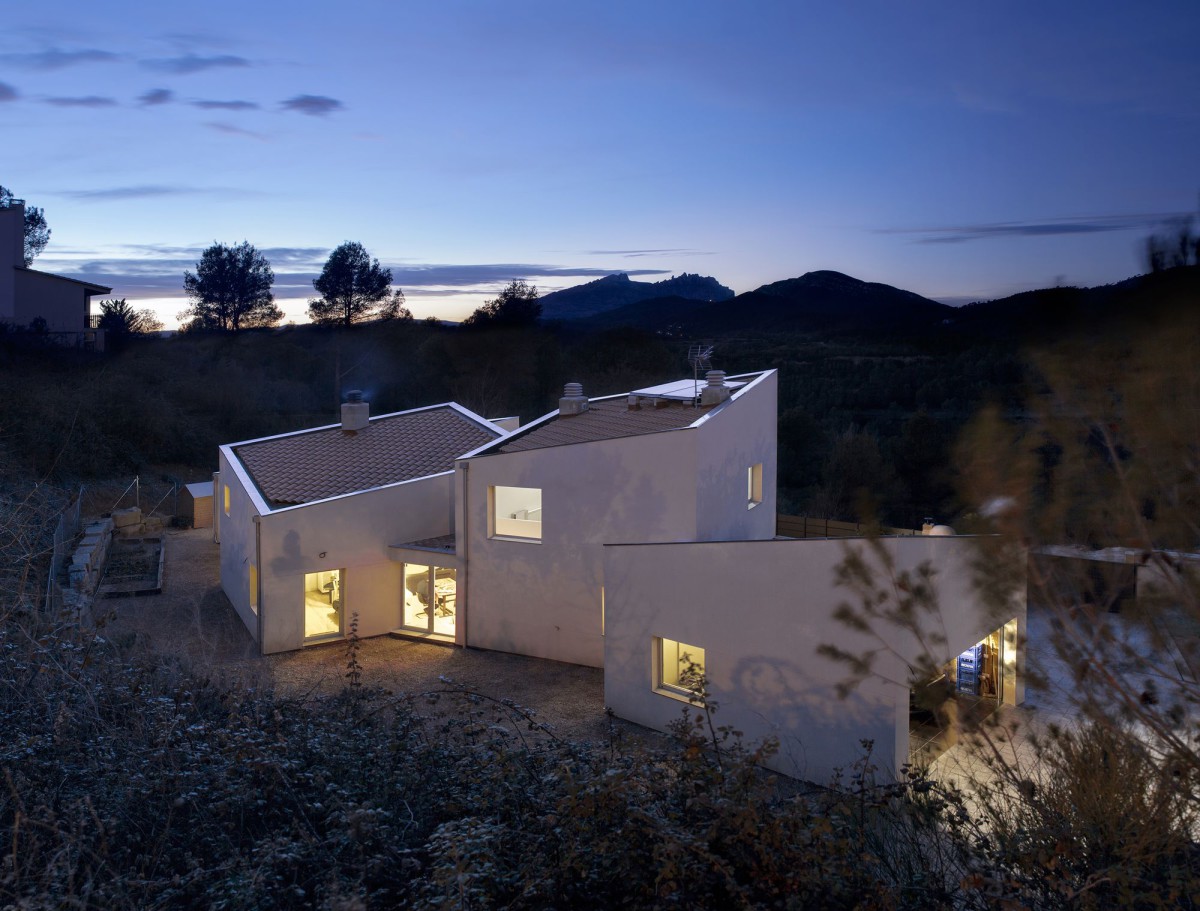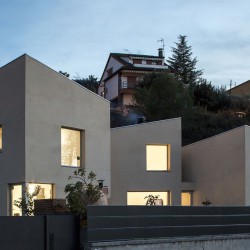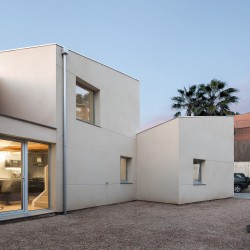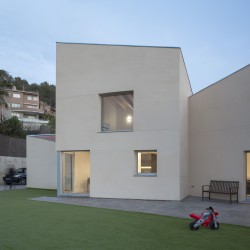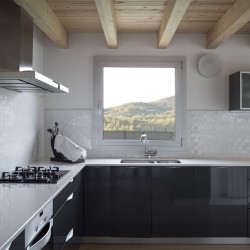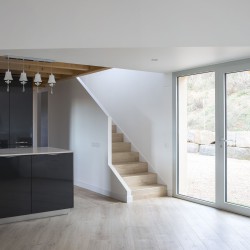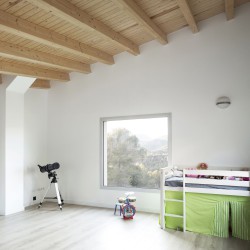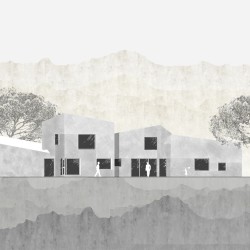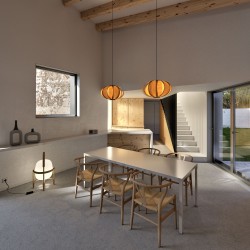Albert Brito . photos: © Flavio Coddou . + houzz
Viladecavalls is located on a small raised hill in Vallès area that makes the house having a dominant position to the territory. Located in an urban area with a garden city configuration and a dispersed and very heterogeneous architecture, the plot is behind the village and facing the landscape without any obstacle in front that can cover the view towards the territory.
_
The project tries to incorporate the limit situation in which it is. On one side the village, isolated houses, urbanization. On the other side the landscape, the territory, the views towards Montserrat mountain. This duality builds the house geometry, its situation within the plot and the typology adopted.
The house dialogues with the traditional architecture and is inspired by the traditional Catalan houses on the other side of the valley. Like the architecture of the Masia, made by addition of elements, the house is formed by four perfect squared volumes, each different size which respond to the needs of the program that is requested and to the required structural and climatic needs. These volumes respond to this landscape-urbanization duality. Its position follows the guidelines that mark the geometry of the site, but at the same time opens it to the views. In this way concave and convex zones are generated around the house that enrich the interstitial spaces of the plot avoiding residual spaces.
With this desire to be reflected in catalan popular architecture and to respond to the area typologies, each volume that form the house has a sloping roof that, diagonally to the structure and responding to the constructive logic, drains to the most optimal area away from the other volumes.
Finally, the house is built with wood frame structure for two reasons. On the one hand, the low quality terrain required a house as light as possible and on the other hand this solution allowed us to act with criteria of sustainability and high energy efficiency in the facades, making this a very comfortable place to live, so in winter and in summer almost no active air conditioning systems are needed to reach high levels of comfort.

